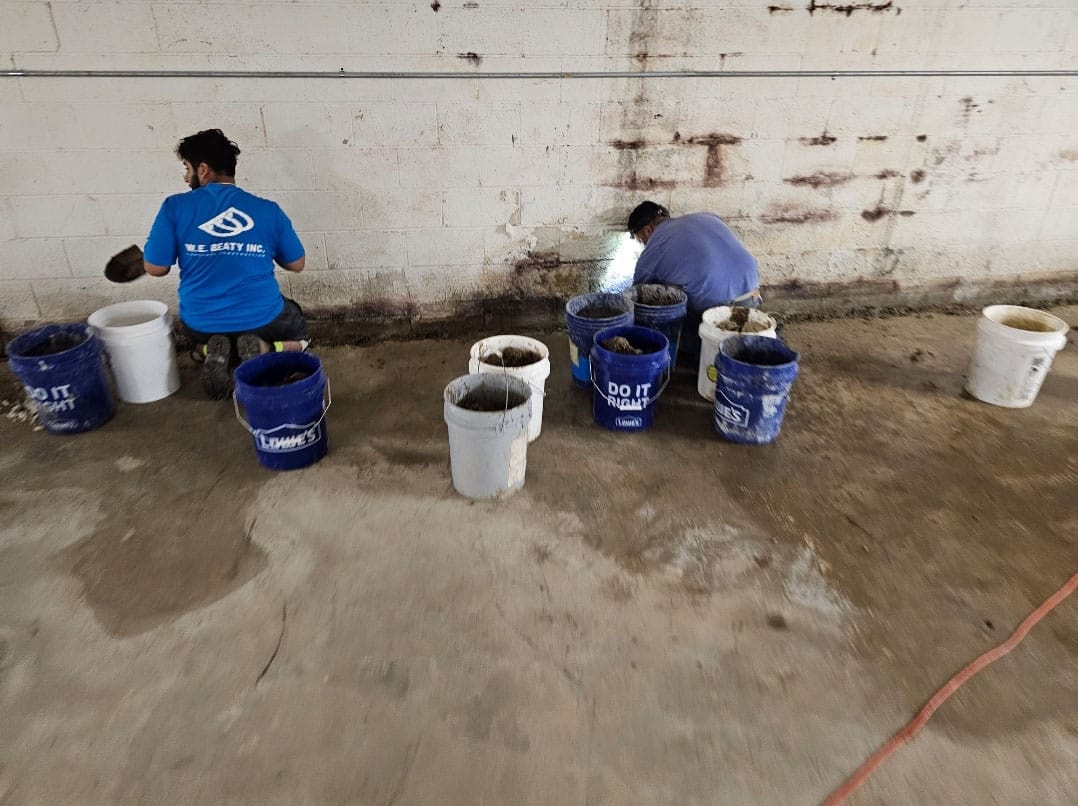
Detecting the early signs of water intrusion in your basement can protect a home’s structural integrity and indoor air quality. Most homeowners overlook subtle clues such as minor discoloration, salt deposits, or persistent dampness, allowing moisture problems to escalate into costly repairs and mold growth. This guide explains how to spot visual, olfactory, and tactile indicators; explores underlying causes from hydrostatic pressure to plumbing leaks; highlights health and financial risks of delayed action; and outlines immediate steps—including professional basement waterproofing services—to safeguard your property.
Visual indicators offer immediate evidence of moisture migration beneath the surface. These signs result from water seeping through porous materials, coating walls and floors with mineral deposits, or causing surface deterioration. Early recognition of visual clues enables targeted interventions before structural components leak.
Water stains arise when liquid penetrates porous materials, leaving mineral-rich discoloration as moisture evaporates. Such patches typically appear below grade, where hydrostatic pressure forces groundwater through tiny concrete capillaries. Early detection of these discolorations can prevent mold colonization and long-term degradation of building materials.
Recognizing these stains paves the way to understanding the textural changes that follow when moisture affects painted surfaces.
Peeling paint and bubbling wallpaper occur when trapped moisture separates coatings from the substrate, creating air pockets and surface distortion. This mechanism highlights sustained dampness behind decorative layers, often originating from persistent leaks or condensation. Addressing these symptoms prevents further delamination and mold proliferation behind walls.
Spotting these surface anomalies leads naturally to identifying mineral deposits that mark deeper seepage.
Efflorescence manifests as white, crystalline salt deposits where moisture transports dissolved minerals to exposed surfaces and then evaporates. This phenomenon indicates continuous water seepage through brick or concrete masonry, often accentuated by poor exterior drainage. Treating efflorescence early helps pinpoint entry points before corrosion or flaking accelerates.
After tracking salt deposits, inspecting structural fissures reveals how moisture exploits foundation weaknesses.
Foundation cracks form under hydrostatic pressure or structural settlement, creating direct channels for water to infiltrate interior spaces. Vertical hairline fissures may indicate soil shrinkage, while diagonal or horizontal cracks suggest pressure-driven leaks. Repairing these gaps with professional injection sealing or waterproof coatings is essential to prevent recurrent intrusion.
Addressing these cracks provides a basis for evaluating olfactory and tactile signals that often accompany hidden moisture.
Basement moisture also reveals itself through scent and touch before visible signs develop. Key olfactory and tactile indicators include:
These olfactory and tactile cues guide targeted inspection for mold and condensation, prompting detailed assessment in the following areas.
A musty odor arises when mold and mildew metabolize organic particles in damp conditions, releasing microbial volatile organic compounds (mVOCs). These earthy scents often precede visible mold growth, providing an early warning to investigate humidity control and potential leaks. Eliminating the odor requires drying out affected areas and remediating mold colonies.
Addressing odors sets the stage for assessing how humidity levels contribute to an uncomfortably damp environment.
High basement humidity—often above 60%—encourages condensation on cold surfaces, fosters microbial growth, and perpetuates elevated moisture content in building materials. Humid environments also signal inadequate ventilation or failing dehumidification systems. Controlling humidity through targeted dehumidifiers and improved airflow prevents mold development and preserves indoor air quality.
Understanding these tactile experiences leads to the structural and mechanical causes behind moisture migration.
Identifying underlying causes is critical to remedying water intrusion rather than simply treating symptoms. Many homeowners assume surface remedies suffice, yet systemic issues like hydrostatic pressure, plumbing leaks, or poor drainage demand targeted solutions.
Understanding these root causes directs homeowners to appropriate professional services such as water damage restoration and basement waterproofing.
Neglecting early water intrusion signs can compromise health and finances in equal measure.
Mold growth in basements releases spores that reduce indoor air quality and can trigger allergies, respiratory irritation, and infections in vulnerable individuals. These health risks escalate when spores circulate through HVAC systems, affecting upper floors. Early remediation with certified mold remediation specialists limits exposure and safeguards occupant well-being.
Homeowners should consult certified waterproofing and mold remediation experts when water stains recur after DIY drying, efflorescence persists, or humidity remains above 60% despite dehumidifiers. Professional diagnostics can include moisture mapping, infrared scanning, and foundation inspections to tailor solutions. Engaging specialists early secures warranties and ensures comprehensive remediation.
Identifying subtle signs—like tiny wall fissures, recurring damp smells, or slight paint delamination—enables targeted interventions before mold colonizes or structural components degrade. Proactive measures such as installing sump pumps, improving exterior drainage, and sealing foundation cracks substantially reduce repair frequency and costs. Early detection thus preserves property value and maintains a healthy living environment.
Recognizing early signs of water intrusion in your basement is the most effective way to protect structural integrity and indoor air quality. Promptly addressing visual cues, odors, and underlying causes can avert costly repairs and health risks. Integrating professional basement waterproofing services or water damage restoration ensures durable solutions with performance guarantees. Homeowners who act swiftly transform potential hazards into long-term peace of mind.